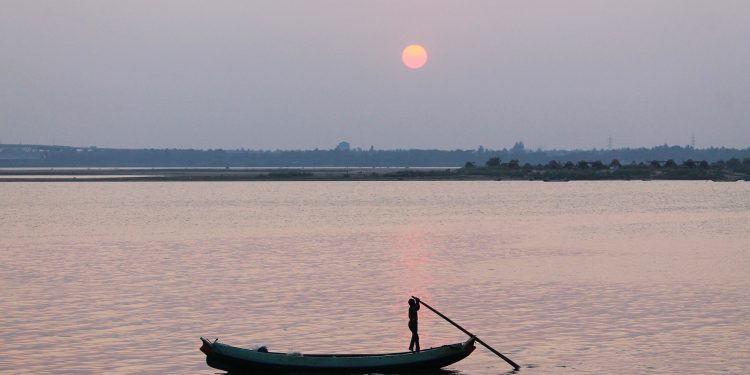The Ken-Batwa River-Linking Project

The dispute between Uttar Pradesh and Madhya Pradesh over India’s ambitious river linking project, connecting Ken river in MP with Betwa in U.P., has been resolved and an agreement has been framed. Emphasizing the plight of people in 13 drought-prone and seven flood-prone regions of the country, Union water resources minister, Gadkari urged the need to develop effective means for conserving available water and sharing what is surplus.
Background
The idea was first conceived 15 years back and the final clearance from the environmental ministry was given on August 25th, 2017. It is estimated to cost around Rs 18,000 crore. The project proposes to transfer water from the Ken river basin to the Betwa basin in Uttar Pradesh. Both rivers are tributaries of the Yamuna. The very idea of connecting rivers was first proposed by Sir Arthur Cotton in 1850s. It was then revived in 1972 by K.L. Rao, then India’s minister of power and irrigation. Subsequently, a total of 30 river links were identified across India which would connect every major river in the Indian mainland. In August, the parliamentary standing committee on agriculture, led by Bharatiya Janata Party (BJP) MP Hukmdev Narayan Yadav, in its report asked the central government to form an empowered group of state ministers on interlinking of rivers similar to the empowered group of state finance ministers on the goods and services tax (GST) to resolve issues.
Water Water Everywhere, Not a Drop To Drink
Despite water covering about 70% of the earth, only a tiny portion of it is accessible for human use.According to the U.S. Geological Survey, Over 68 percent of the freshwater on Earth is found in icecaps and glaciers, and just over 30 percent is found in groundwater. Only about 0.3 percent of our freshwater is found in the surface water of lakes, rivers, and swamps.
Regardless of improvements made by the country in the availability and quality of water, children in 100 million families lack water and only 33% of country’s population has access to traditional sanitation as a result of which 21% of diseases are water related.
Specifications
Water proposed to be diverted from Ken basin, after considering in basin demands and downstream commitments designated for providing irrigation in Madhya Pradesh and Uttar Pradesh . This link canal will provide irrigation to water short areas of upper Betwa basin of M.P by way of substitution and also to enroute areas of Madhya Pradesh & Uttar Pradesh. Apart from drinking water facility & enroute irrigation of 47000 ha in Chhatarpur and Tikamgarh districts of Madhya Pradesh and Hamirpur and Jhansi districts of Uttar Pradesh, provision for downstream commitments of 1375 Mm3 for M.P. and 850 Mm3 of water for U.P. has also been made.The cost of the project is estimated around Rs 18000 crores and , will take at least two decades to be completed, and require construction of 52 dams.The project comprises two powerhouses of 2×30 MW and 3×6 MW each, two tunnels of 1.9 km long at upper level, 1.1 km long tunnel at lower level and a 221 km long Ken-Betwa link canal, proposed on the left bank of the river.
Opposition: Should People Be Worried?
Environmentalists have opposed this idea for a long time which is one of the reasons for the delay. It is estimated that a total of 10 villages consisting of 1,585 families are likely to be affected by this project. About 9,000 hectares area would be submerged, out of which 4,141 hectares is forest land in the Panna Tiger Reserve in Madhya Pradesh.According to Arun Kansal,who heads the regional water studies at TERI University, there are larger environmental concerns because, river water also carries soil which supports the whole ecosystem.
Conclusion
The river linking project is undoubtedly an ambitious one for the Modi-government. Other projects in the pipeline are Damanganga-Pinjal and Par-Tapi-Narmada. The project is politically risky in nature and given the amount of money involved, there is lack of technological information regarding the viability of the project. While the promises of the project are appealing, government can make more efforts in creating awareness among the public regarding the problems and the steps it is taking to mitigate them.


